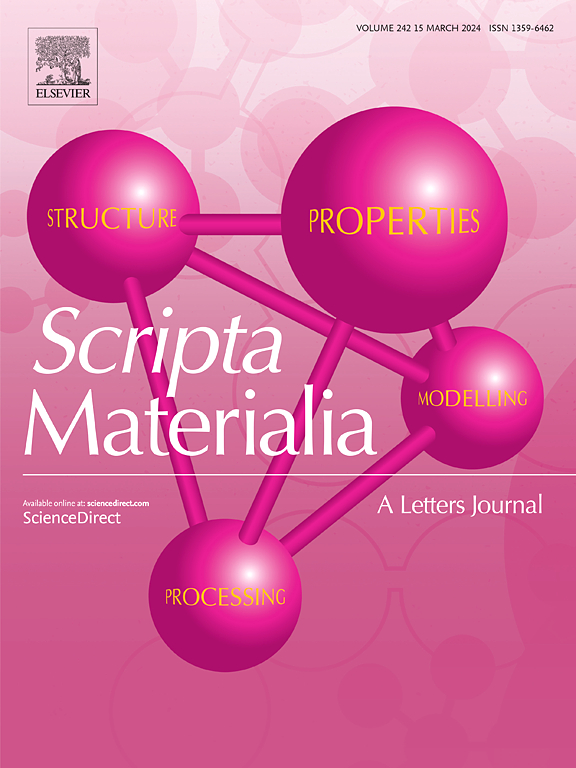以Al4C3为碳源制备晶内双峰微纳TiC增强高强延展性钛基复合材料
IF 5.3
2区 材料科学
Q2 MATERIALS SCIENCE, MULTIDISCIPLINARY
引用次数: 0
摘要
碳质材料是制备原位tic增强钛基复合材料的常用材料。然而,这些TiC倾向于位于初级粉末边界附近,导致粗化、团聚和有限的力学性能。以Al4C3颗粒为碳源,通过粉末冶金法制备了分散在基体晶粒内的细小TiC增强tmc,该tmc具有较高的强度和良好的塑性。结果表明,在以Al4C3为前驱体的TiC/Ti(Al4C3)中,在基体晶粒内部原位形成了数微米和数十纳米双峰尺寸的TiC颗粒,使得细小TiC分布均匀;因此,热挤压TiC/Ti(Al4C3)在强度和延展性方面表现出显著的优势,比传统TiC/Ti(C)(使用炭黑作为前驱体)分别提高52%和41%,比TiC/Ti(非原位)(使用非原位TiC颗粒)分别提高57%和12%。该研究为优化tmc的微观结构和力学性能提供了一种新的策略。本文章由计算机程序翻译,如有差异,请以英文原文为准。

Fabrication of high-strength and ductile titanium matrix composites reinforced with intragranular bimodal micro/nano TiC particles by using Al4C3 as carbon source
Carbonaceous substances are commonly used to fabricate in-situ-TiC-reinforced titanium matrix composites (TMCs). However, those TiC tend to locate at/near primary powder boundaries, causing coarsening, agglomeration, and limited mechanical properties. Here, by using Al4C3 particles as carbon source, TMCs reinforced with fine TiC dispersed within the matrix grains were fabricated via powder metallurgy, which exhibit both high strength and excellent ductility. Results showed that, in TiC/Ti(Al4C3) (using Al4C3 as precursor), TiC particles with bimodal sizes of several micrometers and tens of nanometers were in situ formed inside matrix grains, resulting in a homogeneous distribution of fine TiC. Consequently, the hot-extruded TiC/Ti(Al4C3) exhibits remarkable advantages in strength and ductility, with increases of 52 % and 41 % over the conventional TiC/Ti(C) (using carbon black as precursor), and 57 % and 12 % over the TiC/Ti(ex-situ) (using ex-situ TiC particles), respectively. This study provides a new strategy to optimize the microstructure and mechanical properties of TMCs.
求助全文
通过发布文献求助,成功后即可免费获取论文全文。
去求助
来源期刊

Scripta Materialia
工程技术-材料科学:综合
CiteScore
11.40
自引率
5.00%
发文量
581
审稿时长
34 days
期刊介绍:
Scripta Materialia is a LETTERS journal of Acta Materialia, providing a forum for the rapid publication of short communications on the relationship between the structure and the properties of inorganic materials. The emphasis is on originality rather than incremental research. Short reports on the development of materials with novel or substantially improved properties are also welcomed. Emphasis is on either the functional or mechanical behavior of metals, ceramics and semiconductors at all length scales.
 求助内容:
求助内容: 应助结果提醒方式:
应助结果提醒方式:


